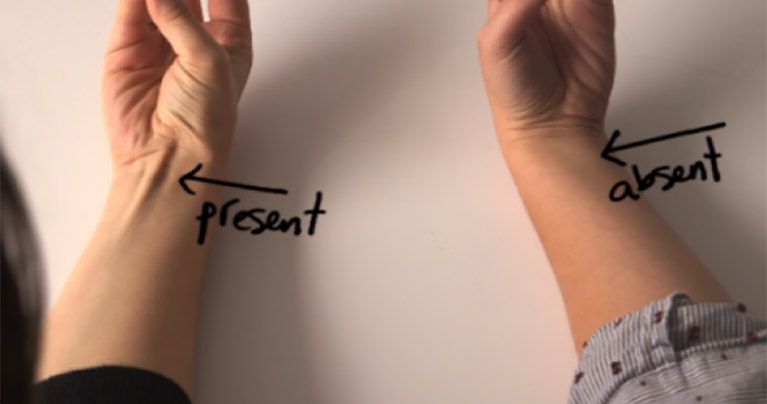Through history, as the human body developed, many of its functions and parts became unnecessary. So, nowadays the body is like a temple and museum of natural history. We can see the result of this evolution, because many of these parts are still present on the body, not because you need them but because your ancestors had them.
These parts no longer serve their function but haven’t disappeared yet from the body.
These are some of the signs of human evolution:
1. Vestigial muscle
Place your arm on a flat surface, push your thumbs against your pinky and tip your hand slightly up. You will probably see a raised bend in the middle of the wrist, called a vestigial muscle. This particular tendon connects to the palmaris longus, a muscle that around 10-15% of people are missing on one or both hands.
It does not mean they are weaker nor they have different grip strength. In fact, it is one of the first tendons that the surgeons will take out and use it in the reconstructive and cosmetic surgeries.
It is the most developed among animals that use their forelimbs to move around. It is longer in lemurs and monkeys and shorter in chimps.
2. Ear muscles
These are other three leftover muscles that people have which are attached to the outer ear. We can’t move them to locate the source of the sound. According to one research, there was a spike of activity in the ear muscle in response to sudden sound. This reaction does not move the ears but we can probably guess the location of the sound.
3. Goosebumps
Another vestigial body reaction is when you get goosebumps. When you are cold, tiny muscles attached to the body hair contract thus pulling the hair upright and causing a bump. For animals, these goosebumps help them to stay warm and respond to cold temperatures. It is also the so-called “fight or flight” response. It helps some animals to appear larger in moments of threat.
4. Tail
In our spine, there are a set of fused vertebrae, called a tailbone. It now serves as an anchor of some pelvic muscles, but in fact, it is what is left from our ancestors’ tails. Everyone had actually a tail at one point. In some animals, this tails continues to develop while in human and other apes the tail cells die a few weeks after they appear.
5. Palmar grasp reflex
Babies up until six months have a grasp of everything you put in their hand. This also happens with their feet, a real characteristic of monkeys.
All of these signs are genetic relics of our evolutionary past.
The following video will explain you of where the origin of these signs.
Via IFL Science

